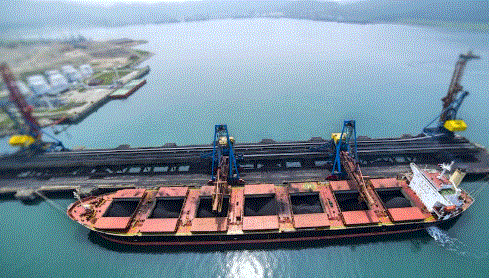It was another softening day for the Capesize paper market despite robust steel demand in China that led iron ore prices to rise to a six-year high.
The Capesize 5 time charter average went down by $225 day-on-day to $19,468 on Wednesday, despite another round of fixing spree by Brazil’s Vale for the Brazil to China route.
Thus, the Baltic Dry Index (BDI) also dipped by 1.13 % day-on-day to 1,568 readings on softer Capesize freight rates.
Another fixing spree by Vale
Brazil’s Vale was heard to fix another 4-5 vessels for the key Brazil to China route for early-September laycan, after the previous round of fixing around five vessels earlier in the week.
According to trade sources, the fixing spree by Vale may relieve some freight pressure from the lengthy list of ballasters seen over the previous two weeks.
Due to huge intakes of vessels from Vale, the offers and bids for second-half September laycan were expected to trade at mid-to high-$18s/wmt and mid-$17s/wmt level respectively.
On the contrary, the freight rates for Pacific market went down due to higher supply of vessels amid decent shipping demand.
With the high iron ore prices toward $130/mt, it had spurred more shipping activities for the key west Australia to China route, while there was also some coal shipping demand from east Australia, Indonesia, and Russia.
Bunker prices soften on lower consumption
VLSFO prices dipped by $3/mt day-on-day to $350/mt at the port of Singapore, over softening of bunker consumption.
As AP Moller-Maersk, the world’s largest shipping company reported a drop of 14.4% in its bunker consumption for Q2 due to the impact of coronavirus pandemic.
According to Maersk, the total bunker consumption went down to 2.33 million mt in Q2 2020, as compared to 2.77 million mt for corresponding period last year.
In the meantime, the shipping company carried a total pf 2.903 million forty-foot equivalent units (FFE) in Q2, which went down by 15.7% on-year due to lower shipping demand affected by the pandemic.
The lower bunker consumption may attribute to higher fuel efficiency by Maersk which managed to drive down bunker consumption per TEU per nautical mile by 2.4% to 40.7 g/TEU*NM.
